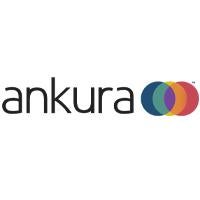The Big Picture: Culture and the Intangible Economy
In the past 45 years, intangible assets have steadily and quickly replaced physical capital as the most valuable asset class (see graphic 1). Employees are the stewards of these intangible assets as they bring the unique experience, knowledge, networks, and know-how that are voluntarily shared or withheld and codified in company culture. Indeed, the various drivers of culture, including leadership, policies, decision rights, organizational design, people development, and relevancy, determine the extent to which employees share or horde these intangible assets. And, since the decision to do so unfolds, employee-by-employee, on a continuous basis, culture’s contribution to company performance in the intangible economy has markedly grown.

Graphic 1
Unfortunately, the prism through which business managers assess company performance – the income statement, balance sheet, and statement of cash flows, all under the rubric of Generally Acceptable Accounting Principles (GAAP) – is woefully inadequate for providing the insights for driving short-term and sustained performance in the intangible economy. To drive superior performance in today’s economy, this gap in GAAP (see Mind the Human Capital GAAP) needs to be closed by incorporating dimensions of culture and human capital productivity.
Double Benefit: Culture Accelerates Strategy Execution and Moderates Risk
Though often misunderstood as a kind of amorphous cloud that influences behavior, culture has always been central to leadership rhetoric, whether in the military (esprit de corps), athletics (chemistry), or corporations (culture). But, there is no denying that it has become increasingly relevant in business and the popular press. In the wake of several spectacular, value-destroying lapses, boards of directors have taken an active role in monitoring culture and holding Chief Executive Officers (CEOs) responsible for shaping it (see Corporate Culture: A Governance Priority).
One of a company's most important and challenging sources of value is its culture. Talent is drawn to organizations with strong cultures, and employee retention and productivity are heavily influenced by it. Most importantly, it has a significant impact on employee actions that drive ethically achieving financial goals. The effectiveness and reputations of companies are significantly impacted by company culture. Given that culture is inextricably linked to both strategy execution (see Corporate Culture Accelerates (or Stalls) Digital Transformation) and risk management, it must be attended to as a most precious company asset.
Specific Advantages of a Performance Culture
Over half of the factors influencing employee engagement at work are related to culture fit:
-
Employees are 48% more productive when they feel they and the companies that employ them are relevant. Employee engagement, that is, discretionary effort volunteered or withheld, is directly correlated to this feeling of relevancy. Employees leave when they believe they or their employers are irrelevant and the most capable, those with the most options, leave more quickly. As the most capable leave and the rest stay, there is a net erosion of human capital.
-
Ankura identified employees who view themselves as “good fits” (see relevancy above) as 20% more likely to become top performers. Getting nearly 48% more value from 20% of the workforce (often the largest operating expense of a business) is a game changer. There is no other lever management can pull that will make this large a difference.
-
For the majority of midsize and large companies, factors that are attributed to culture fit – or lack thereof – cause 40% of new hires to leave within 18 months. Depending on these employee’s level of organizational seniority, replacement costs are high. After severance, signing bonuses, recruiter costs, orientation, and training are accounted for, the costs associated with executive turnover can reach 400% of annual compensation. For the majority of roles, the expense is closer to 100% of annualized cash compensation. Accordingly, the average company spends in excess of $14 million annually for every 1,000 employees in its workforce. “Good” cultural fits are 27% less likely to leave their jobs, saving over $3.7 million for every 1,000 employees.
Having a solid, cohesive company culture that guides business operations has several distinct advantages:
-
Retention. A culture of relevancy draws better talent and, more crucially, keeps that talent on board. People are more likely to put forth more effort than is strictly necessary to ensure their retention when they feel a sense of relevancy to a relevant organization. As a result, there will be less employee turnover, fewer new hires to train and onboard, and a larger body of institutional knowledge.
-
Values. An organization’s culture is its values and ethics delivery system. It is contradictory for organizational leaders to claim to be values-driven while paying company culture only lip service attention. Employees will be more likely to set and achieve their own goals if, for instance, corporate culture prioritizes goal-setting and goal achievement. Without clearly defining and consistently promoting cultural norms – attitudinal and behavioral norms – stated values get decimated by the organizational system.
-
Identity. A company’s brand identity is heavily influenced by corporate culture. In actuality, culture and brand are, metaphorically, two sides of the same coin. Performance improves when the two are consonant and suffers when it is not.
-
Growth and Profitability. The exponential effect of putting employees in a position to succeed by clearly defining roles, expanding decision rights, and ensuring cultural fit is the reason David Wolfe, in his research for the business best-seller, Firms of Endearment, identified companies with strong, well-aligned cultures were 6-times more successful (Total Return) than their competitors (see Transmuting Company Culture Into Financial Performance and Sustainability). The retained executive search firm, Heidrick & Struggles, found that companies led by “culture accelerator CEOs” have financial performance (assessed by a three-year revenue CAGR) that is more than double that of other companies. Coupled with other notable differences, these CEOs are far more intentional about culture than other leaders and this intentionality leads to improved financial results.
The CFO as Culture Auditor and Advocate
In recent years, the Chief Financial Officer's (CFO's) role has undergone a significant change. In addition to financial reporting, CFOs are now accountable for accelerating performance, driving analysis and data-based decision-making, and offering the perspective and insights required to hasten the execution of strategies. The CFO should play a key role in finding an optimal balance between people and investment in light of budget constraints, technological advancements, and significant changes in organizational cultures and employee expectations. This balance requires CFOs to see employees not merely as “cost factors” but as “value factors.”
Considering that investing in human capital is typically one of a company's largest investments, CFOs are increasingly prioritizing investments in corporate culture and evaluating its effects on the enterprise's short- and long-term value. However, as soon as they begin to feel the weight of this responsibility, many CFOs are distressed to realize that traditional GAAP-based financial statements are deceptive when it comes to assessing and managing performance of culture and human capital (the gaps in GAAP).
Progressive CFOs are adding techniques to their financial repertoire, including Strategic Activity Mapping, CultureKey™ Diagnostics, Human Equity Valuation™, and Value-Based Talent Management [2], to supplement traditional financial and business performance management methods. Methods such as the Human Equity Valuation™ (HEV) techniques (see a sample HEV Impact Statement) provide much sharper answers to critical year-over-year workforce investment questions including:
-
What is our Total Workforce Investment (TWI) per employee, as a percentage of revenue, and as a percentage of total expenses?
-
What is our Human Equity ROI Ratio?
-
What is our Total Workforce Productivity Impact?
These methods reveal the effectiveness of workforce investments with the level of financial rigor required by CFOs.
Many businesses are now utilizing the CFO's strong analytical expertise and broad understanding of the business to enhance and expand the Chief Human Resource Officer's (CHRO's) workforce planning and talent deployment capabilities in line with the CEO's strategic vision. We refer to this CEO, CFO, and CHRO collaboration as the Triple Helix of Corporate Performance (see What if C-Suite Executives Viewed Themselves as Investors in a Portfolio of Human Capital Assets?). Due to their strong aptitude to connect financial performance, CFOs require a seat at the table in implementing a more successful, value-driven, and operationally-focused business strategy.
The Triple Helix of Corporate Performance in the Intangible Economy
Developing a strategic process that finds the nexus among business strategy, culture and human capital management, and financial outcomes – the Triple Helix of Corporate Performance – is, for most companies, both an immediate need and a daunting challenge. Doing so requires a more integrative point of view, new HR capabilities, and a tighter and more frequent collaboration among the CEO, CHRO, and CFO – but will give your company a distinct competitive advantage in the intangible economy.





 />i
/>i


